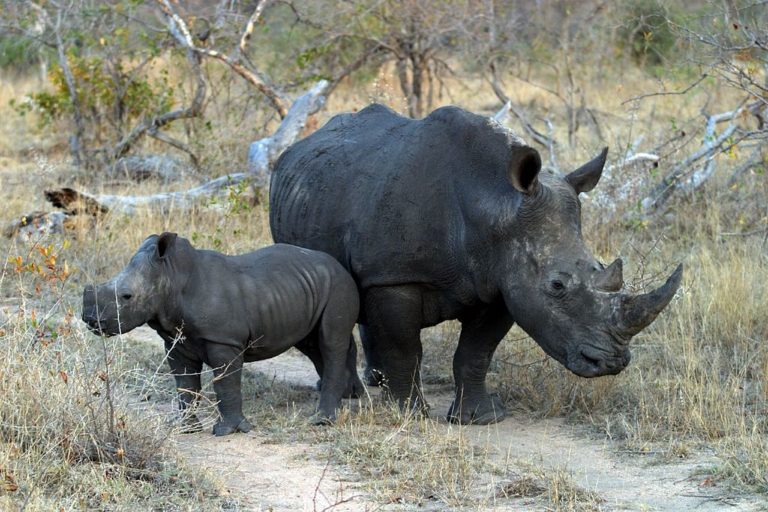Once you start looking at how many crises began with clear but essentially ignored warning signals, it becomes strikingly clear how often we miss opportunities to head off predictable problems.
The European Union has known since the creation of the euro that the currency was bound for trouble if did not create workable ways to adjust for the wide differences among its national economies. Yet well into its second decade, its failure to do so threatens the currency’s future. The deadly defects in ignition switches and airbags at General Motors and Takata, and the emissions test fixing at Volkswagen were hardly a secret inside the companies, which covered them up instead of correcting them. Despite overwhelming scientific evidence of climate change caused by human activity, temperatures keep rising, with July 2016 marking the hottest month ever recorded.
The reasons are different in each case, but the pattern is the same: humans consistently fail to respond to looming dangers, at astronomical costs in lives, money, reputation, and lost opportunities. Once you start looking at how many crises began with clear but essentially ignored warning signals, it becomes strikingly clear how often we miss opportunities to head off predictable problems.
Too many people take for granted that we cannot react in time to change the course of the disasters even when they are right in front of us. It’s well past time to challenge this assumption.
The English language has created a whole menagerie of idioms reflecting how poorly we deal with the obvious: the elephant in the room, the see-no-hear-no-speak-no-evil monkeys, the ostrich with its head in the sand.
Nassim Nicholas Taleb’s 2007 book, The Black Swan, added a new species as a way to describe events that individually are highly improbable and out of the range of preconceived notions, but as a group happen far more often than we realize. His metaphor comes from a time when Europeans knew only about white swans and could not imagine that such a thing as a black swan existed.
Financial and policy circles seized on black swans, but largely missed Taleb’s main points: First, some of the most impactful events are unpredictable and beyond our imaginations. Second, decision makers need to design systems that can stand up to extreme unexpected events.
Instead, investors and decision makers used the unpredictability of black swans as a way to excuse the claim about the 2008 global economic collapse: “We never saw it coming,” despite the many warnings from the International Monetary Fund, Bank of International Settlements, respected journalists, and anyone who had ever read Charles Kindleberger’s work on financial crises. At the same time, in an apparent contradiction, a swarm of armchair black swan “forecasters” emerged, despite the inherent unpredictability of these rare events that makes forecasting them all but impossible.
The black swan was an important start toward creating a sense of agency in the face of potential devastation. Yet without knowing the parameters of a threat, as is the case with black swans, how exactly do we prepare? It’s much more efficient to design policies to address a specific problem. And obsessing about highly unlikely threats distract us from the highly probable dangers.
That’s where the gray rhino comes in: the love child of the unpredictable black swan and the studiously ignored elephant in the room. Our zoo of troublemakers has needed such a character to help describe and focus energy on the obvious, predictable risks that we consistently neglect. Gray rhinos are big and dangerous like swans and elephants. Unlike their kin, they are highly probable, charging straight at us –and, crucially, give us a choice to respond.
Like swans, both “Black” and “White” rhinos exist; unlike swans, neither is actually black or white, since all rhinos are gray. Their color is so obvious, but their formal names don’t reflect it.
We can’t seem to solve the biggest challenges today despite their size and likelihood—from global policy issues like climate change and financial crisis to disruptive technologies that have reshaped entire industries, destroying jobs and companies but creating new industries and fortunes in the process. Look at Kodak, which invented the digital camera but sidelined it to avoid cannibalizing its film business. Or Blackberry, which was slow to grasp new innovations and not only lost its lead in the smartphone market to Apple and Samsung but also faced an existential threat.
The gray rhino is just as relevant for dealing with personal problems that may not have global impact but certainly profoundly affect people facing them and their families: refusing to eat healthy and exercise even when your doctor tells you you’re at high risk for heart disease or diabetes; excuses not to save for retirement or other long-term goals; or failure to deal with relationship issues. “The end of my marriage was a gray rhino,” a colleague told me ruefully. And how many students wait until the last minute to do that term paper, or pull all-nighters just before the final exam when studying earlier would have given them a much better chance of getting a good grade?
Now think of the impact of such common procrastinations magnified by the billions of people in companies, governments, even leaders making important decisions that affect millions, even billions, of other people.
Why are we so bad at confronting gray rhinos? Some people argue that the problem is “weak signals”; in other words, we don’t see them coming. Nonsense. Most gray rhinos happen not because of signals that were too weak but of listeners determined to ignore them, combined with biases and flaws in our decision making processes, and systems that encourage and accept as normal our failure to respond.
The very size and obviousness of these problematic pachyderms is part of what makes us so bad at responding to gray rhinos. In her classic description of the five stages of grief, the psychiatrist Elisabeth Kübler-Ross wrote that the first stage, denial, serves a useful purpose when it is temporary: “Denial functions as a buffer after unexpected shocking news, allows the patient to collect himself and with time, mobilize other, less radical defenses.”
Gray rhinos similarly move through stages, with different obstacles and opportunities along the way. Even after denial subsides, we’re unlikely to act but instead to muddle through because of the perverse incentives and resource constraints get in the way. Politicians and executives are more likely to focus on the short term, hoping to push any hard decisions on to the next guy. Things don’t get fixed because we don’t have the budget, but when they collapse it costs much more to pick up the pieces than it would have to fix the problem earlier. Muddling thus traps us in a vicious circle of budget gaps leading to even bigger shortfalls.
The collapse of the I-35 bridge in Minnesota in 2007, for example, cost roughly $60 million in lost time and business on top of the $251 million to build a new bridge; in other words a 24 percent premium that could have gone to fixing other bridges.
Once you move past muddling, you have to make the right choice in creating an action plan. This third stage, diagnosing, is fraught: choosing the wrong response to a problem can hurt a leader more than doing nothing. Think of Herbert Hoover, whose austerity measures now take blame for making the Great Depression worse. Or New Coke, whose introduction was a response to a very real market threat. Coke eventually won back market share from Pepsi, but the New Coke episode now is remembered more for the misstep than for the fact that it worked in the end.
If you spend too long diagnosing and prescribing, you’ll end up in the fourth stage: panic, when your decisions are more likely to make things worse. Just as nobody wants to pull the punch bowl away from the party during a boom, fear drives markets down, often irrationally, during a bust. Governments rarely cut budgets when the economy is strong, and only seem to call for belt tightening when the economy is weak and austerity only makes it worse. Should it be a surprise that the zoological term for a herd of rhinos is a “crash”?
In an ideal world, you’ll move from denial to the fifth stage, action, as soon as possible, by choosing the right response to a gray rhino and motivating others to act with you. Sometimes actions are too little, too late, as many people fear of last year’s agreement on climate change. Sometimes the leaders who get others to act pay a high price: Think of what happened to Joan of Arc. Whether leaders merely keep a crisis from getting worse, or whether they use challenging circumstances to create new opportunities, avoiding being trampled rarely, if ever, means keeping the status quo.
If we are so hard-wired to avoid dealing with what we know we ought to, why should we try? The best leaders confront gray rhinos while they still have a chance because it’s far from a given that they will fail. And if they succeed, they will create new opportunities. They can save lives, create jobs, strengthen communities, and even profit.
Applying lessons from behavioral science to gray rhinos can improve how we make decisions, not only making it less likely to ignore risks but also helping us to become more adept at recognizing new opportunities.
Merely identifying the gray rhinos in your life, your work, your community your country, and our planet is not enough to head them off. Nor is it easy to beat the many obstacles in the way of responding effectively.
But without recognizing that all humans do neglect the most obvious dangers in front of us and that we have a choice to do better, you will lose the opportunity to deal with them — and you will get trampled.
Originally published on LinkedIn Pulse as an Editor’s Pick.
Michele Wucker is the author, most recently, of THE GRAY RHINO: How to Recognize and Act on the Obvious Dangers We Ignore. A former media and think tank executive, she now helps decision makers to deal with evident but persistent and neglected risks.
Photo caption: A White Rhinoceros (Ceratotherium simum) cow and calf coated in mud at Sabi Sands Game Reserve, South Africa. By Flickr user James Temple [CC BY 2.0 (https://creativecommons.org/licenses/by/2.0)], via Wikimedia Commons
- Gray Rhino Risks and Responses to Watch in 2024 - January 10, 2024
- Chapter Zero Italy: Assessing Long-term Climate Impact Scenarios - August 8, 2023
- Banking Crisis Part II: Some Obvious Lessons that Bear Repeating - March 24, 2023


